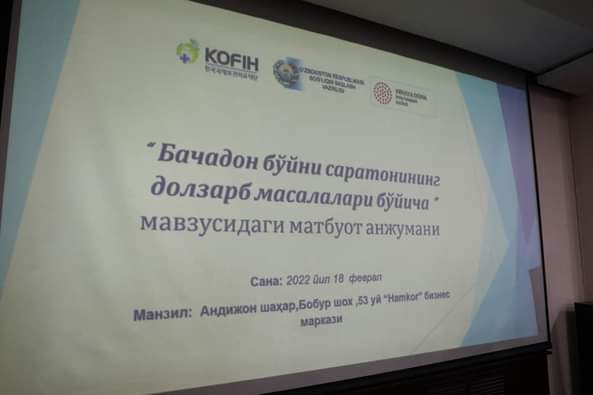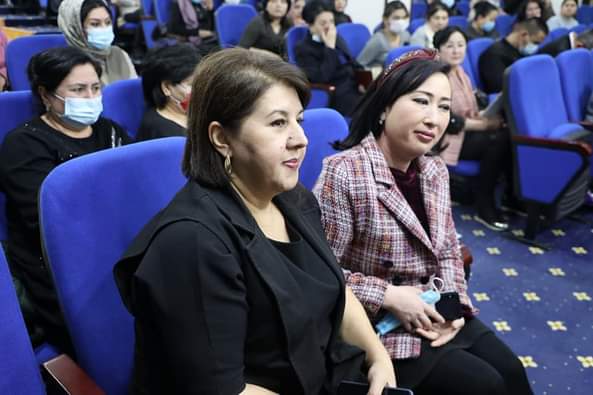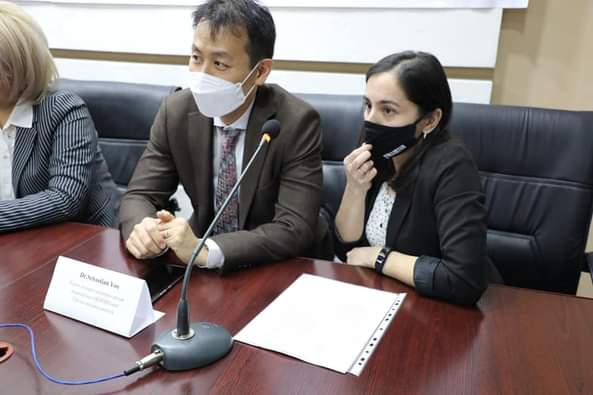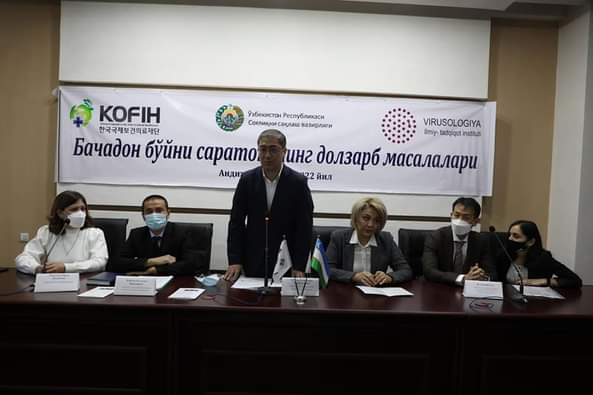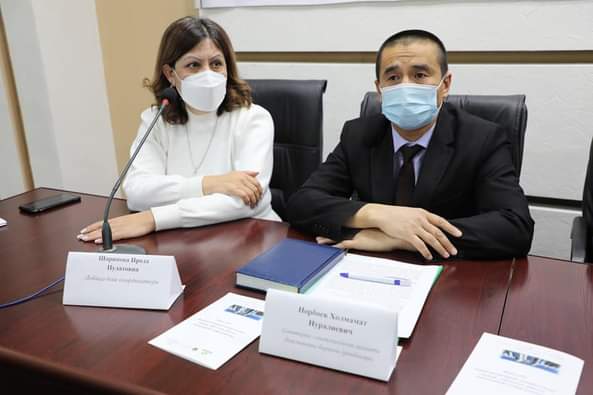Date and time
2Choose a doctor
3Make an appointment
Date and time
2Choose a doctor
3Make an appointment
On February 17-18, 2017, at the business center " Hamkor” " in the Andijan region, the Institute for scientific research on Virology, the South Korean foundation of KOFIH, as well as the Republican sanitary-epidemiological peace and Public Health Service organized a press conference on the topic "Research on the prevalence of the human papillomavirus among the population in the regions of the Republic”.
The conference was attended by representatives of the Ministry of Health, KOFIH foundation of South Korea, sanitary-epidemiological peace and Public Health Service, Employees of the Andijan Regional Administration, doctors of the scientific center, infectious diseases hospitals, and media.
According to WHO, every year more than 570 thousand women around the world are first diagnosed with cervical cancer, of which 311 thousand die as a result of this disease.
Those who spoke at the press conference noted that, as in the world, cervical cancer is the most common cancer among women of all ages and is the most common cancer in the post-menopausal period. As for the mortality rate from diseases, cervical cancer is in third place after death due to breast cancer and stomach cancer among women of all ages and second only to cervical cancer among women of childbearing age (15-44 years).
According to Globocan, each year in Uzbekistan, 1863 women are diagnosed with cervical cancer, more than 42 percent of them die. Most of these deaths occur as a result of late diagnosis. The main (98-99 percent) cause of cervical cancer is the human papillomavirus (HPV).
Cervical cancer is a dangerous and common disease that occurs in women of any age. The exacerbation of the disease occurs at the age of 45-55 years.
The causes of cervical cancer – are human papillomaviruses, sexually transmitted infections. Threeraydi in 21 percent of young people aged 30 to 80 years. Usually viruses "leave" the body in 2-3 years. The long presence of the virus in the uterus can lead to the development of cancer. Cervical cancer is only cancer that can be completely prevented. It develops gradually. The development of cancer is caused by diseases that took cancer. They have enough time to diagnose and treat them.
By decree of the president of the Republic of Uzbekistan № 2866 of April 4, 2017, the program "further development of the oncology service in the Republic of Uzbekistan in 2017-2021 and improvement of provision of oncological assistance to the population" was approved. In this program, monitoring the epidemiological situation is established by conducting surveys of the profile and HPV of oncological diseases, the formation of a single database (Cancer Register) of patients with oncological diseases, the development of effective programs of the profile of cancer.
To carry out the monitoring of the epidemiological situation, in cooperation with the virology research institute and the South Korean foundation of KOFIH, it is envisaged to carry out the investment pilot project on the topic "Detection of the human papillomavirus in the regions of the Republic, including The Tashkent City, Samarkand, and Andijan regions between the women and This project will be implemented for 3 years. The main objective of the project is to investigate the significance of the second factor of cancer, namely cervical cancer, by identifying the percentage of prevalence among women with high oncogene species of HPV among women with fertile by early detection of diseases in which the human papillomavirus is transmitted.
The following results are expected from this pilot project implemented in our republic:
To this end, in cooperation with the Research Institute of Virology and the KOFIH foundation of South Korea in our republic, the processes of free screening in 5 Central Family polyclinics in Tashkent and 2, Central Family polyclinics in the Andijan region are continuing.
In the following family polyclinics, the processes of free screening continue:
Central polyclinic of Yunusabad district
Address: Tashkent City, Yunusabad District-19, Yunus ota street, (former T.Zakhidova), 2.
phone:71 223-10-81; 71 223-10-80.
Central polyclinic of Chilonzor district
Address: Tashkent City, Bunyodkor Street, 7A.
phone: 71 273-51-99; 71 273-38-19
Central polyclinic of Mirzo Ulugbek district
ddress: Tashkent City, TTZ-2.
phone: 71 261-64-60; 71 264-56-15.
Central polyclinic of Yashnabad District
Address: Tashkent City, Yashnabad Street, Mahtumquli (former. Agriculture), 2.
phone: 71 231-75-08.
Central polyclinic in Shaykhantakhur district
Address: Tashkent City, Kukcha Darvaza street, (former Mannon Uygur), 305.
phone: 71 240606-95.
For the Andijan region:
Address: Andijan city, Mashrab Street, 39-house.
phone: 74 226-52-34; 74 226-76-98.
Andijan City, 1-family polyclinic
Address: Andijan city, Tashkent Street, 50-House.
phone: 74 227-42-74.
All women aged 30 to 49 years who are on the list are being tested for HPV(cervical cancer)free of charge. In Tashkent, more than 9,000 women underwent cervical cancer examinations. According to the results of the study, 11.08% percent of women detected the virus. The changes identified in the process of screening for cervical cancer are controlled by the appropriate doctors and the necessary recommendations are made. .
Detailed information on these and other issues was given at the conference. At the end of the event, representatives of mass media received answers to all their questions.


